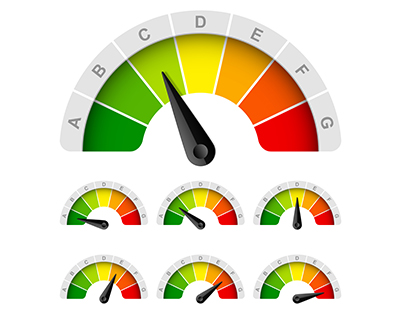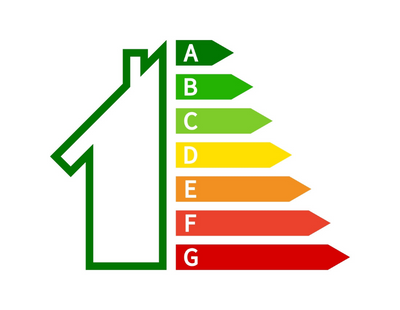For years, high costs and a lack of any obvious incentive or requirement have meant most HMO property managers have deferred any improvements to the energy efficiency of their portfolios. However, we are now rapidly approaching an inflection point as the scales tip towards investments like solar panels and home battery storage.
So what’s changed?
A shift in sentiment
The first factor is legislation. Changes in requirements on energy efficiency ratings are causing landlords to look for efficiencies. The UK government is currently seeking to increase the minimum EPC rating for rental properties from band E to C by 31st December 2025.
This would mean landlords need to improve each of their properties’ energy performance significantly within the next 37 months - or face fines potentially reaching £30,000. Previously, landlords were able to side-step efficiency upgrades if the smallest suggested improvements cost more than £3,500. While this rule will remain, under the new plans the smallest cost would have to exceed £10,000 for landlords to qualify for the exemption.
Don’t forget batteries
The second factor swaying landlords is financial. The cost of solar panels has dropped by more than 88% since 2010. The growth in supply of batteries and improvement in battery technology has meant a combined residential solar panel and battery installation now costs around £10,000, including installation. Whilst the price could be close to halved if the battery was excluded, it is the battery that really makes this solution a viable investment.
Solar panels are the components that turn sunlight into energy. But it is the battery that stores the energy generated until it is needed. Most solar energy is generated between 10 am and 2 pm on a clear day, but without a battery, most of the electricity is surplus to a household’s demand so must be distributed to the National Grid – often on a low-value export tariff.
With a battery as part of the mix, the surplus electricity generated can be stored until later in the day when it is required. On a smart meter Economy 7 tariff, the battery can also be charged at a cheaper per-kilowatt-hour cost, further reducing electricity consumption costs.
Shrewd buy-to-let owners are now cottoning on to this being a solution to both the forthcoming EPC legislation and, more interestingly, the hiatus on bills-inclusive rents.
Bills-included tenancies have been growing in popularity, particularly among student tenants. However, soaring energy prices and wavering government commitments to energy price caps have forced many to abandon this popular pricing strategy. Again – a solar panel and battery combination could provide the answer.
It pays to go solar
A 3.12kWp solar array (8 panels) with a 5kW home battery costing £9,700 could add up to 15 points to a property’s EPC rating, which would move a band E house to band C – making it compliant with the proposed legislation.
This set-up – with panels on a 45-degree roof pitch and facing south – could provide 53% of the energy needed for a standard mid-terrace house using 2,800kWh per year, based on industry-standard calculations. Put another way, it would reduce electricity consumption derived from the grid by over 1,498kWh per year.
Electricity on a standard variable tariff currently costs 34p/kWh but rates are forecast to soar to around 60p/kWh following the end of the current Energy Price Cap in April 2023. Students – and other tenants – signing up to bills-inclusive energy for tenancies starting next summer are currently locking in electricity tariffs at around 53p/kWh.
Based on the rates currently being locked in, a student house would save £794 per year in electricity costs (or £5.07 per person per week) for a three-bed house, before factoring in any additional savings from overnight battery charging on an Economy 7 tariff.
Clearly, this £5.07 per week can either be passed on to the tenants in lower bills-inclusive rents – thereby increasing the marketability of the property during house-hunting season – or recouped by the landlord as a return on investment. Property owners are therefore starting to see efficiency upgrades such as this as investments in the future value of their portfolio.
The final factor tipping the scales in favour of renewables is growing consumer awareness about climate change.
The Greener Homes Attitude Tracker – an initiative by NatWest and IHS Markit – showed that 63% of homeowners are planning to make green home improvements in the next decade. This could well trickle down into the private rental sector, with tenants choosing where to live based on the property’s environmental credentials.
From all of this, it’s clear there is a strong case for solar panels and home batteries within the UK’s HMO stock. Adoption would contribute hugely to the nation’s net-zero efforts but would also present landlords with a cash-generating asset that can either support lower bills-inclusive rents or pay a green dividend. Greater awareness of this option and subsidised finance to support upfront costs would go a long way to mobilising investment.
* Tom Walker is Co-Founder of StuRents *
Want to comment on this story? Our focus is on providing a platform for you to share your insights and views and we welcome contributions.
If any post is considered to victimise, harass, degrade or intimidate an individual or group of individuals, then the post may be deleted and the individual immediately banned from posting in future.
Please help us by reporting comments you consider to be unduly offensive so we can review and take action if necessary. Thank you.















.png)





Join the conversation
Jump to latest comment and add your reply
Does it work in practice? I am looking into it as I would like to help save the planet and my money. I hope it doesn’t turn out like every other energy conservation measure -they have had no effect on energy usage in my HMOs.
If anyone else has tried solar panels please let me know, I don’t want to spend money on something else that doesn’t work.
Jim Haliburton
The HMODaddy
Please login to comment